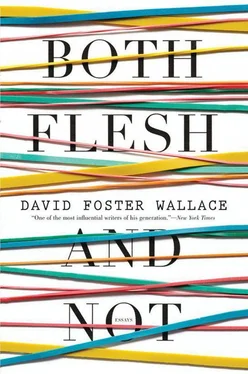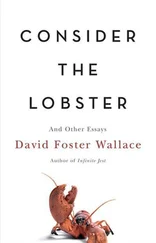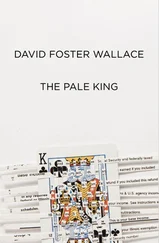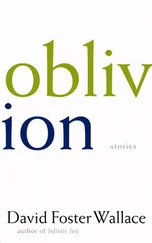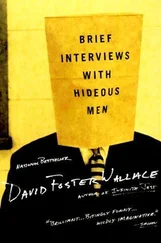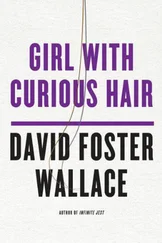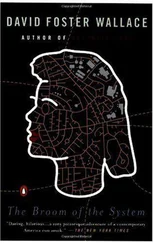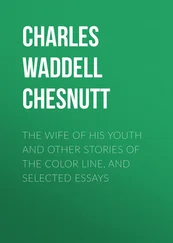Noma This medical noun signifies an especially icky ulcerous infection of the mouth or genitals. Because the condition most commonly strikes children living in abject poverty/squalor, it’s a bit like scrofula. And just as the adj. scrofulous has gradually extended its sense to mean “corrupt, degenerate, gnarly,” so nomal seems ripe for similar extension; it could serve as a slightly obscure or erudite synonym for “scrofulous, repulsive, pathetically gross, grossly pathetic”… you get the idea.
Hairy There are maybe more descriptors for various kinds of hair and hairiness than any other word-set in English, and some of them are extremely strange and fun. The more pedestrian terms like shaggy, unshorn, bushy, coiffed, and so on we’ll figure you already know. The adj. barbigerous is an extremely uptown synonym for bearded. Cirrose and cirrous, from the Latin cirrus meaning “curl” or “fringe” (as in cirrus clouds ), can both be used to refer to somebody’s curly or tufty or wispy/feathery hair — Nicolas Cage’s hair in Adaptation is cirrose. Crinite means “hairy or possessed of a hair-like appendage,” though it’s mainly a botanical term and would be a bit eccentric applied to a person. Crinose, though, is a people-adj. that means “having a lot of hair,” especially in the sense of one’s hair being really long. The related noun crinosity is antiquated but not obsolete and can be used to refer to somebody’s hair in an amusingly donnish way, as in Madonna’s normally platinum crinosity is now a maternal brown. Glabrous, which is the loveliest of all hair-related adjectives, means having no hair (on a given part) at all. Please note that glabrous means more baby’s-bottom-hairless than bald or shaved, though if you wanted to describe a bald person in an ironically fancy way you could talk about his glabrous dome or something. Hirsute is probably the most familiar upmarket synonym for hairy, totally at home in any kind of formal writing. Like that of many hair-related adjectives, hirsute ’s original use was in botany (where it means “covered with coarse or bristly hairs”), but in regular usage its definition is much more general. Not so with the noun hirsutism, though, which is still semi-medical and means having a truly pathological amount of hair and/or hair that’s unusually or unevenly distributed — the point is that the noun’s not really a synonym for hairiness. Hispid means “covered with stiff or rough little hairs” and could apply to a military pate or unshaved jaw. Hispidulous is mainly just a puffed-up form of hispid and should be avoided. Lanate and lanated mean “having or being composed of woolly hairs.” A prettier and slightly more familiar way to describe woolly hair is with the adjective flocculent. (There’s also floccose, but this is used mainly of odd little hairy fruits like kiwi and quince.) Then there are the pil- based words, all derived from the Latin pilus (=hair). Pilose, another fairly common adj., means “covered with fine soft hair.” Deceptively similar-looking is pilous, which is a more hardcore-science adj. that the Oxford English Dictionary defines as “characterized by or abounding in hair, hairy,” citing as an example the following (unexplained, thus kind of troubling) sentence: It is covered with a rough pilous epidermis. Pilous ’s own similarity to pileous is not deceptive, since the latter, a medical adjective, means “consisting of or pertaining to hair”; e.g., certain hair-intensive cancerous growths are classified as pileous tumors. On the other hand, pileous tumors are sometimes also called piliferous tumors, wherein the latter adj. means “having or producing hair” (in botany, piliferous means “tipped with a hair,” as in certain weird leaves). There’s also piligerous, which means “covered or clothed in hair” and is used primarily of animals, and piliated, which comes from the plural of pilus and is used to describe certain kinds of hairy or fringe-intensive bacteria. Last but not least is the noun pilimiction, which names a hopefully very rare medical disorder “in which piliform or hair-like bodies are passed in the urine.” Outside of maybe describing some kind of terribly excruciated facial expression as pilimictive, however, it’s hard to imagine a mainstream use for pilimiction. (One pil- word N.B.: It so happens that the adjective pubescent literally means “covered with soft downy hairs,” so technically it qualifies as a synonym for pilose; but as of 2004 almost no reader will take pubescent this way, so I’d stick with pilose. ) Tomentose means “covered with dense little matted hairs”—baby chimps, hobbits’ feet, and Robin Williams are all tomentose. Ulotrichous, which is properly classed with lannate and flocculent, is an old and extremely fancy term for “crisply woolly hair.” Be advised that it is also, if not exactly a racist adj., certainly a racial one — A. C. Haddon’s Races of Man, from the early 1900s, famously classified races according to three basic hair types: leiotrichous (straight), cymotrichous (wavy), and ulotrichous.
Now go do the right thing.
N.B. If you’re thinking of using any of the more esoteric adjectives here, you’d be well advised to keep an OED close at hand. This is not simply a gratuitous plug of another Oxford U. Press product. The fact is that some of these hair-related terms aren’t in other dictionaries; plus, the terms are often specialized enough that you’re going to want not just an abstract definition but a couple sample sentences so that you can see how the words are actually used. Only the OED has both defs. and in-context samples for just about every significant word in the language. Actually, why not screw appearances and just state the obvious: No really serious writer should be without an OED, whether it’s bought or stolen or hacked into the online version of or whatever you need to do. Nothing else comes close.
— 2004
riparian—having to do with rivers rostrate(adj.) — having a beaklike part rowen—a second crop, as of hay, in a season ruck—a multitude of people mixed together; (v.) to crease or fold ruddled(adj.) — red-shot, bloody (ruddle is ferrous red dye) ruderal(adj.) — growing in garbage, waste, icky ground, especially w/r/t plants rue—fragrant weeds rufous—color: reddish, from pinkish to orangeish ruga—bio term for fold, wrinkle, or crease, as in lining of stomach; (adj.) rugate runnel—a creek or narrow channel for water ruth—compassion or pity for another; sorrow about one’s own misdeeds sacerdotal—of or relating to priests satyromaniac—male version of nymphomaniac scilicet—adverb, Latin for “that is to say,” “namely” (like “viz.”?); abbreviations are sc., scil., ss. sciolism—pretentious air of scholarship; superficial knowledgeability; scissile (adj.) — cut or split easily; “a scissile mineral,” “a scissile peptide bond” scored — scarred or marked in parallel lines scotopia — ability to see in dark scupper — opening for draining off water septage — waste found in septic tank septectomy — removal of all or part ofseptum sere (adj.) — withered, dry seriate — arranged or occurring in a series or in rows seriatim — Latin adverb: one after another, in a series sericeous—covered with soft silky hairs serrate — having or forming a row of sharp little teethy things serried—pressed or crowded together, especially in rows… used with troops sessile — in botany, leaf that’s stalkless and attached directly at base; in zoology, permanently attached, not free-moving, like a barnacle seta—a stiff hair or bristle; (pl.) setae settle (n.)—wood en bench with high back and storage space under the seat Shavian—characteristic of George Bernard Shaw Sheraton—1800s type of furniture, simple, straight lines, long legs; tall, narrow desks, etc. shirr (v.) — to gather cloth into decorative rows by parallel stitching shivaree — Midwestern: noisy mock serenade for newlyweds (cops in rain in It’s a Wonderful Life ) shrive — to obtain absolution shriven — absolved sic passim—“thus everywhere”; used to show something recurs throughout text silent butler—box w/handle and hinged cover for collecting ashes and crumbs silesia — sturdy twill used for linings and pockets (white greebly pocket material) silex—silica or finely ground tripoli used as an inertpaint filler simony—buying or selling ecclesiastical pardons, offices, or emoluments sinistrorse—growing upward in a spiral that turns from right to left: “a sinistrorse vine” skell — homeless derelict skep—beehive made of straw skive (v.) — to cut thin layers off sloe-eyed—having slanted dark eyes soffit—underside of a structural component like a beam, arch, or staircase soigné (adj.) — sophisticated, elegant, fashionable: “a soigné little restaurant” soilure (adj.)—dirty,soiled somnifacient—sleep-inducing somniferous — sleep-inducing son et lumière— theater show at night in outdoor setting, usually a historical setting, and related to history of a place
Читать дальше
